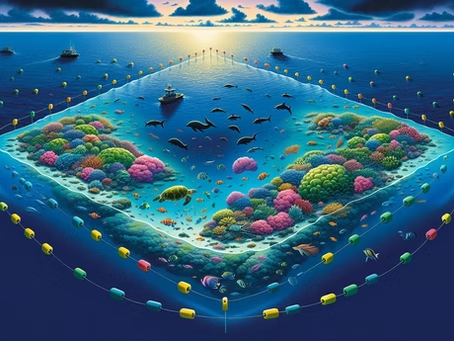Marine Protected Areas: Sanctuaries for Ocean Life
Marine Protected Areas (MPAs) are vital ocean zones where human activity is restricted to conserve biodiversity and promote sustainable use. They act as underwater sanctuaries, helping endangered species and fragile ecosystems recover. Adaptive management is essential, as climate change shifts habitats, and the ambitious ’30 by 30′ goal seeks to protect 30% of global oceans by 2030.
Success Stories and Challenges
- MPAs have restored coral reefs and over-exploited species, proving long-term protection works.
- Extending MPA duration and adopting adaptive designs improves resilience against climate impacts.
- Challenges include illegal fishing, insufficient funding, and static borders that may not match shifting ecosystems.
Responsible Tourism: Enjoy Without Harm
Tourism can coexist with conservation when managed responsibly. Eco-conscious travelers can minimize impact by:
- Choosing sustainable tour operators and accommodations
- Following marked paths and snorkeling areas
- Supporting local economies through sustainably sourced products
- Reducing carbon footprints via shared or human-powered transport
Education, Awareness, and NGOs
Public outreach fosters stewardship and policy change. NGOs play a crucial role by:
- Engaging communities through education and beach cleanups
- Advocating for stronger policies and international agreements
- Leading citizen science projects to monitor ecosystems
Creative campaigns, social media, and grassroots initiatives amplify awareness, inspiring sustainable behaviors and community-led conservation.
Innovations and Technology
Marine biology and AI are transforming ocean protection:
- Coral restoration through artificial reefs and selective breeding
- Predictive analytics and machine learning to forecast ecosystem changes
- AI detection of illegal fishing using satellite imagery
- Drones and robotics for monitoring and restoration
These tools help preemptively manage ecosystems and enhance conservation strategies globally.
Policy, Funding, and Partnerships
Effective conservation requires legal frameworks, economic support, and collaboration:
- International treaties like the High Seas Treaty and national laws enforce protection
- Public-private partnerships pool resources and drive innovation
- Grants and philanthropy fund research, MPAs, and grassroots initiatives
Community and Individual Action
Local engagement is key. Communities organize cleanups, implement sustainable fishing, and educate neighbors. Individuals can contribute by:
- Choosing sustainable seafood and products with minimal packaging
- Reducing plastic use and conserving energy
- Supporting responsible brands and NGOs
- Advocating for policy change and participating in local initiatives
Conclusion
MPAs, combined with responsible tourism, community action, technology, and policy support, are central to preserving ocean health. Every choice, from sustainable living to advocacy, contributes to thriving marine ecosystems. Protecting the ocean is not just about conserving species—it’s safeguarding the essence of our planet.

